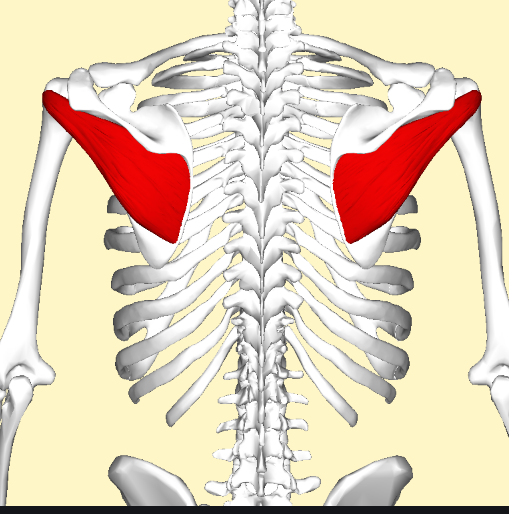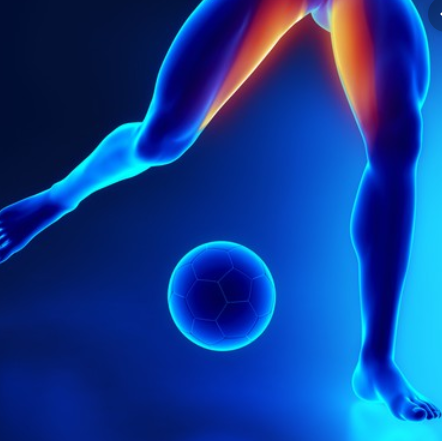Filter
All
Abdomen
Abdominal Massage
Abdominal Muscle Strain
About Trigger Points
Achilles Tendinitis
achilles Tendinopathy
Achilles Tendon
Active Isolated Stretching
Acupuncture
Adductor Brevis
Adductor Longus
Adductor Magnus
Adductor Pollicis
Adductor Strain
Adductors
Adhesive Capsulitis
AINS
Alexander Technique
Anatomy Trains
Ankle
Ankle Sprains
Arthritis
Athletic Trainer
Athletic Training
Awards
Back
Back pain
Biceps Brachii
Biceps Femoris
Biomechanics
Bob McAtee
Bowen
Bowen Therapy
Brachialis
Brachioradialis
Breathing
Breathing Exercises
Bruxism
Bulging Disc
Calcific Tendonitis
Calf
Calf Cramp
Canine
Carpal Tunnel Syndrome
CBD
Cerebral Palsy
Cervical Spondylosis
Cervicogenic Dizziness
Climber's Elbow
Clinical Assessment
Clinical Reasoning
Coccydynia
Coccyx
Constipation
Continued Education
Coracobrachialis
Core Muscles
Cranial Sacral Therapy
cranio-sacral Therapy
Craniosacral Therapy
CRPS
Cryotherapy
CST
Cubital Tunnel Syndrome
Cupping
Deep Foot Flexors
Deep Front Line
Deep Neck Flexors
Degenerative Disc Disease
Deltoid
Diabetes
Diaphragm
Digastricus
Dislocation of the Shoulder
Dizziness
Dogs
Doula
Dr Joi
Drop Wrist
Dry Needling
Dupuytren’s Contracture
Elbow
Epicranius Muscles
Epley Manouver
Equine
Erector Spinae
Evidence
Exercise Band
External Oblique
FAI
Feet
Fibromyalgia
Fibularis
Fire Cupping
Flexor Carpi Radialis
Foam Roller
Foot Drop
Foot Intrinsics
Foot Massage
Foot Pain
Football
Frontalis
Frozen Shoulder
Fybromyalgia
Gastrocnemius
Glutes
Gluteus Maximus
Gluteus Medius
Gluteus Minimus
Gluteus Muscles
Golfer's Elbow
Gracilis
Groin
Groin Strain
Habituation
Hamstring Muscles
Hamstring Strains
Hamstrings
Hand & Fingers
Head and Neck
Head Massage
Headache
Headaches
Heart
Heel Pain
Herniated Disc
Hip
Hip and Thigh
Hip Extensors
Hip Flexors
Hip Pain
Hips
Horizontal Pulling
Horses
Hypertonic Muscles
Iliopsoas
Iliotibial band
Iliotibial Band Syndrome
IMS
Infraspinatus
Intercostals
Intrinsic Foot Muscles
Irritable Bowel Syndrome
Ischemic Compression Technique
Isometric Exercise
ITB
ITBS
Jaw Pain
Joint Mobilization
Knee
Knee Pain
Lateral Elbow Pain
Lateral Pterygoid
Latissimus Dorsi
Leg
Leg Cramp
Levator Ani Syndrome
Levator Scapulae
Longus Capitis
Longus Colli
Low Back pain
Lumbar Back Pain
Lumbar Pain
Manual Lymphatic Drainage
Massage
Massage Cupping
Massage Therapy
Massage Tutorial
Masseter
Medial Tibial Stress Syndrome
Median Nerve
Medical Acupuncture
Migraine
mtss
Multifidus
Muscle cramp
Muscle Energy Techniques
Muscular Dystrophy
Neck
Neck Massage
Neck Pain
Neck Stiffness
Neck Stretch
Nerve Entrapment Syndromes
Nerve Flossing
Neural Dynamic Testing
Neuromuscular Techniques
Niel Asher Technique
Night Cramp
Nutrition
OA Thumb
Obliques
Occipitalis
Oncology Massage
Orbicularis Oculi
Osteopathy
Osteoporosis
Overuse and Overload Injuries
Palmaris Longus
Paradoxical Breathing
Patella
Patellar Ligament
Pectineus
Pectoralis Major
Pectoralis Minor
Pectoralis Muscles
Pelvic Floor
Pelvic Pain
pelvis
Peripheral Nerve Entrapments
Peroneal Muscles
Peroneal Tendonitis
Peroneals
PFPS
Pilates
Pilates Principles
Piriformis
Piriformis Syndrome
Pitcher's Elbow
Plantar Fascia
Plantar Fasciitis
Plantar flexion
Plantaris
Plantart Fasciitis
Podcast
Popliteus
Posterior Deltoid
Posture
Pregnancy
Pregnancy Massage
Prenatal
Prenatal Massage
Pressure Tools
Preventing Trigger Points
Prolapsed Disc
Pronator Teres
Psoas
QL
Quadratus Femoris
Quadratus Lumborum
Quadriceps
Quads
Radial Nerve Palsy
Raynaud’s Syndrome
Rectus Abdominis
Rectus Femoris
Rehabilitation
Rhomboids
Rotator Cuff
Rotator Cuff Injuries
Rotator Cuff Muscles
Rotatores
RSD
Runner's Knee
Sacroiliac Joint
Sacrum
Sartorius
Scalenes
Scalp
Scapula
Scarring
Sciatic Pain
Sciatica
SCM
SCM Muscle
Self Help
self massage
Semimembranosus
Semitendinosus
Serratus Anterior
Serratus Posterior Inferior
Serratus Posterior Superior
Shin
Shin Splints
Shoulder
Shoulder and Upper Arm
Shoulder Bursitis
Shoulder Exercises
Shoulder Health
Shoulder Impingement
Shoulder Pain
Sinus Drainage
Sinuses
Sinusitis
Sitting Pain
Slipped Disc
Slump Test
Snapping Hip Syndrome
Soccer
Soft Tissue Release
Soleus
Spinal Health
Splenius Capitis
Splenius Cervicis
Spondylolisthesis
Sports Massage
Sports Massage Therapy
Spray & Stretch
Sternalis
Sternocleidomastoid
Strengthening
Stretch
Stretching
Subacromial Impingement
Suboccipitals
Subscapularis
Super Trigger Points
Supinator
Supraspinatus
Taping
Tarsal Tunnel Syndrome
TCM
Tech Neck
Temporalis
Tennis Elbow
Tension Headache
Tensor Fasciae Latae (TFL)
Teres Major
Teres Minor
TFL
Thenar Eminence
Therapeutic Hair Pulling
Thomas Bowen
Thomas Test
Thoracic Mobility
Thoracic Outlet Syndrome
Thoracic Spine
Thoracic Spondylosis
Thoracolumbar
Thumb Pain
Tibialis Anterior
Tibialis Posterior
TMJ
TMJD
Traditional Chinese Medicine
Trapezius
Trendelenburg Sign
Trendelenburg Test
Triceps
Triceps Brachii
Trigger Point Classification
Trigger Point Dry Needling
Trigger Point Release
Trigger Point Therapy
Trigger Points
Trochanteric Bursitis
Upper Trapezius
Vacuum Cupping
Vagus Nerve
Vastus Intermedius
Vastus Lateralis
Vastus Medialis
Vertigo
Whiplash
Winged Scapula
Women's Health
Wrist
Wrist Drop
Wrist Extensors
Wrist Flexors
Yoga
Taping Trigger Points - Infraspinatus
Taping technique for Infraspinatus - Stuart Hinds Through his years working with Olympic athletes, Stuart Hinds has developed unique trigger point taping techniques which are simple, safe,...
October 15, 2016
Taping for Trigger Points - Which Tape To Use?
Taping for Trigger Points Kinesiology tape can help to provide an accumulated off-loading effect by lifting the tissue around trigger point sites. When applied correctly, this allows an unloading to...
May 28, 2016
Tags:
Taping
Invalid Password
Enter




